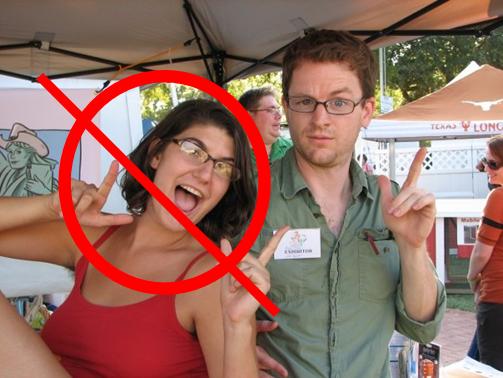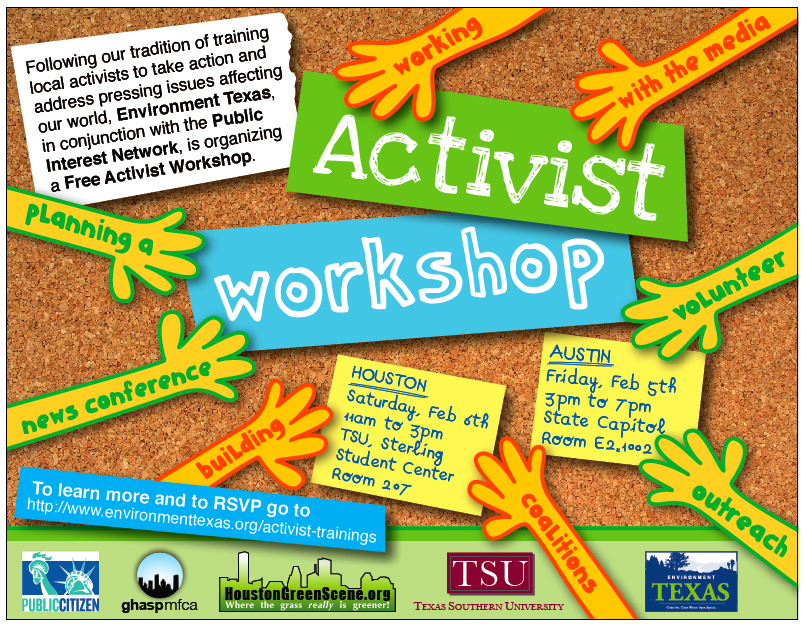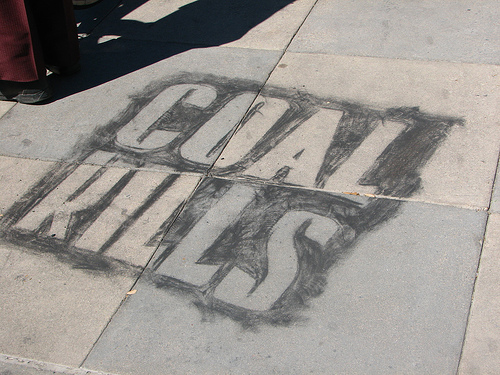The November/December edition of Public Citizen News, a bi-monthly newsletter distributed to Public Citizen members, featured this article on our statewide “Roll Beyond Coal” Tour. Since not all of you out there get the newsletter, I thought I’d share:
‘Roll Beyond Coal’ Tours Texas
By Geena Wardaki
It’s not often that you lug a 20-foot-tall inflatable “coal plant” around Texas to protest dirty coal-fueled power plants.
But that’s exactly what Public Citizen and the Lone Star Chapter of the Sierra Club did in September.
The “coal plant” served as a powerful image that drove home the message to “clean up dirty power plants now,” which the groups delivered to Texas residents during the “Roll Beyond Coal” tour.
The groups visited Texas communities where proposed coal plants would be built and met with local grassroots and citizen organizations.
The two-week tour, which was part of Public Citizen’s Coal Block campaign, stopped in Waco, Dallas, Abilene, College Station, Corpus Christi, Bay City, Houston and Austin. Texas residents turned out in crowds of varying sizes to show their support and protest with the tour at each stop.
“The biggest cities actually had the smallest response,” said Ryan Rittenhouse, Coal Block campaign director for Public Citizen’s Texas office. “The largest turnouts were from grassroots movements where the issue is more local, smaller towns where proposed coal plants would be built and whose residents would be directly affected.”
Area demonstrators included members of T.P.O.W.E.R. (Texans Protecting Our Water Environment and Resources) from Waco, the No Coal Coalition from Bay City, the Multi-County Coalition from Sweetwater and the Clean Economy Coalition from Corpus Christi.
“Roll Beyond Coal” had two main objectives: one, to show support for the Environmental Protection Agency’s (EPA) recent finding that the Texas Commission on Environmental Quality’s (TCEQ) rules for granting permits to new coal plants do not comply with the federal Clean Air Act; and two, to push the EPA to stop the TCEQ from granting any permits for or allowing the operation of any new coal-powered plants and from issuing any new air pollution permits. TCEQ currently issues “flex permits,” which allow coal plants to sometimes exceed emissions as long as they don’t go over their total emission caps for the year. Eleven coal plants are proposed or under construction in Texas, more than any other state in the country.
The “Roll Beyond Coal” tour also educated people about federal climate change legislation making its way through Congress (H.R. 2454). Concern exists that new climate change legislation will grandfather proposed or newly built plants, allowing the plants to avoid the proposed emissions standards. (Senate climate change legislation also would enable new plants to be evade emission control standards for a decade.)
Public Citizen told residents to call and write Texas Sens. John Cornyn (R) and Kay Bailey Hutchison (R), and urge them to vote against the grandfathering of new coal plants in the climate change legislation. (Visit www.coalblock.org to see how you can e-mail these senators, too.)
“The ‘Roll Beyond Coal’ tour was an important and entertaining way to reach out to Texas residents and get them engaged and involved in blocking dirty coal power plants,” Rittenhouse said.
“Now, people need to let their lawmakers know that coal plants should not get special treatment in any climate change legislation.”
Geena Wardaki is a Public Citizen communications intern.
###
By promoting cleaner energy, cleaner government, cleaner cars, and cleaner air for all Texans, we hope to provide for a healthy place to live and prosper. We are Public Citizen Texas.
Read Full Post »





 With the Day of the Dead just around the corner, it’s the time of year to remember friends and family members who have died. That’s why we’ve decided to hold a
With the Day of the Dead just around the corner, it’s the time of year to remember friends and family members who have died. That’s why we’ve decided to hold a 

